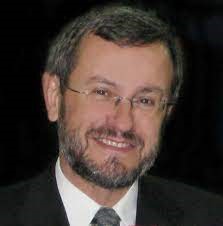Abstract: This lecture overviews the use of drones for infrastructure inspection and maintenance. Various types of inspection, e.g., using visual cameras, LIDAR or thermal cameras are reviewed. Drone vision plays a pivotal role in drone perception/control for infrastructure inspection and maintenance, because: a) it enhances flight safety by drone localization/mapping, obstacle detection and emergency landing detection, and b) performs quality visual data acquisition. The drone should have: a) increased drone decisional autonomy and b) improved drone robustness and safety mechanisms (e.g., communication robustness/safety, embedded flight regulation compliance, obstacle avoidance). Therefore, it must be contextually aware and adaptive. Drone vision and machine learning play a very important role towards this end, covering the following topics: a) semantic world mapping b) drone and target localization, c) drone visual analysis for target/obstacle/point of interest detection, d) 2D/3D target tracking. Finally, embedded on-drone vision (e.g., tracking) and machine learning algorithms are extremely important, as they facilitate drone autonomy, e.g., in communication-denied environments. Two primary application areas are overviewed: a) industrial pipe damage detection and b) electric line/installation inspection. In the first application, pipe images are analyzed (segmented), damages are detected and are backprojected to the 3D pipe models and/or Lidar data. In the second application, electric line detection is performed and detection/tracking of electric towers and other entities (e.g., electric insulators).
The lecture will offer: a) an overview of all the above plus other related topics and will stress the related algorithmic aspects, such as: b) drone localization and world mapping, c) target detection d) target tracking and 3D localization and e) damage assessment. Some issues on embedded CNN, fast convolution and fast transformer computing will be overviewed as well.
 Lecturer Short CV: Prof. Ioannis Pitas (IEEE fellow, IEEE Distinguished Lecturer, EURASIP fellow) received the Diploma and Ph.D.Degree in Electrical Engineering, both from the Aristotle University of Thessaloniki, Greece. Since 1994, he has been a Professor at the Department of Informatics of the same University. He served as a Visiting Professor at several Universities. His current interests are in the areas of image/video processing, machine learning, computer vision, intelligent digital media, human centered interfaces, affective computing, 3D imaging and biomedical imaging. He is also chair of the Autonomous Systems initiative.
Lecturer Short CV: Prof. Ioannis Pitas (IEEE fellow, IEEE Distinguished Lecturer, EURASIP fellow) received the Diploma and Ph.D.Degree in Electrical Engineering, both from the Aristotle University of Thessaloniki, Greece. Since 1994, he has been a Professor at the Department of Informatics of the same University. He served as a Visiting Professor at several Universities. His current interests are in the areas of image/video processing, machine learning, computer vision, intelligent digital media, human centered interfaces, affective computing, 3D imaging and biomedical imaging. He is also chair of the Autonomous Systems initiative.
